My PC
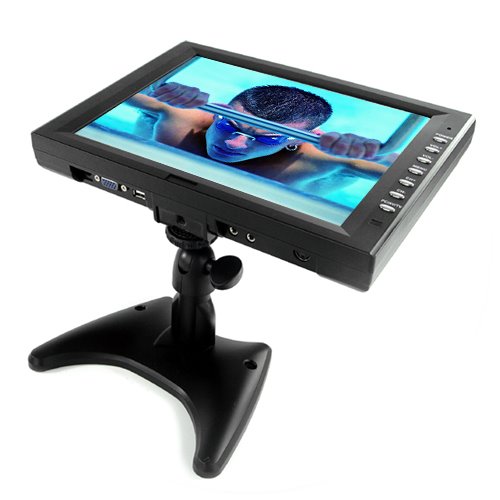
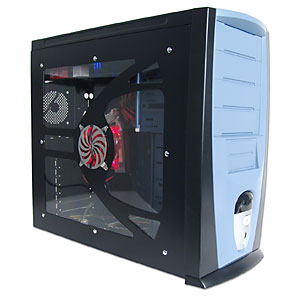
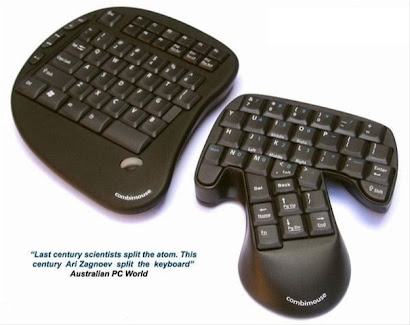
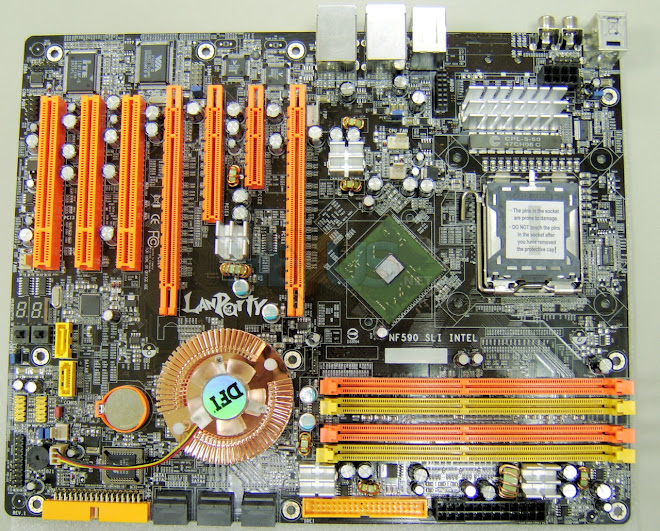
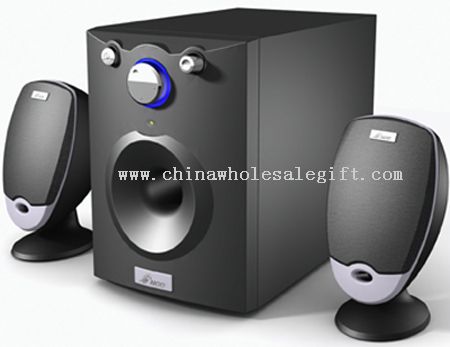
Wednesday, February 25, 2009
Quiz 1
An antistatic wrist strap, ESD wrist strap, or ground bracelet is an antistatic device used to prevent electrostatic discharge (ESD) by safely grounding a person working on electronic equipment. It consists of a stretchy band of fabric with fine conductive fibers woven into it. The fibers are usually made of carbon or carbon-filled rubber, and the strap is bound with a stainless steel clasp or plate. They are usually used in conjunction with an anti-static mat on the workbench, or a special static-dissipating plastic laminate on the workbench surface.
source:www.wikipedia.org
2. After installing a new computer component why is it important to obtain the most current driver for it?
Because it is possible that your computer will not function properly if we use different drivers that are not compatible with our OS as well as our Hardware, we must choose the right thing for us to be satisfied.
3. What are the steps required to install a peripheral device?
Step 1-Shut down the system.
Step 2-Brings the system to the 0 init state, which is the appropriate state for turning the system power off for adding and removing devices.
Step 3-Shuts the system down in 30 seconds. The default is 60 seconds.
Step 4-Continues the system shutdown without user intervention. Otherwise, you are prompted to continue the shutdown process.
Step 5-Select one of the following to turn off power to the system after it is shut down:
o For SPARC platforms, it is safe to turn off power if the ok prompt is displayed.
o For x86 platforms, it is safe to turn off power if the type any key to continue prompt is displayed.
Step 6-Turn off power to all peripheral devices.
For the location of power switches on any peripheral devices, refer to the hardware installation guides that accompany your peripheral devices.
Step 7-Install the peripheral device, making sure that the device you are adding has a different target number than the other devices on the system.
Often, a small switch is located at the back of the disk for selecting the target number.
Refer to the hardware installation guide that accompanies the peripheral device for information on installing and connecting the device.
Step 8-Turn on the power to the system.
The system boots to multiuser mode, and the login prompt is displayed.
Step 9-Verify that the peripheral device has been added by attempting to access the device.
source:http://docs.sun.com/app/docs/doc/817-5093/devconfig-6?a=view
4. If a newly installed peripheral device does not function properly what steps can be taken to correct the problem?
Check if the product or the hardware you bought has no defect or company defects.You should also check for driver updates for all your peripheral devices. If you're up to date, and you started having issues around the time you last updated a driver, try backing down to a lower version.
source:http://www.bautforum.com/archive/index.php/t-62740.html
5. Explain the technique used to help protect data on a hard drive when doing a clean install?
One of the techniques available to help protect data is to divide the hard drive into multiple partitions. With a clean install, many technicians prefer to create one partition for data and a separate partition for the OS. This enables an OS to be upgraded without the risk of losing data. It also simplifies backup and recovery of data files.
6. Explain what a software patch is.
A site built around that computer phenomenon - buggy software. Here you will find patches and bug fixes for a range of mainly Windows-based software. Instead of being drowned in patches for obscure programs this site sticks to popualr releases and is well maintained. The most interesting thing is that unlike many of the software vendor sites, The Software Patch will attempt to give you an idea of what the patch will actually do to your computer.
source:sitereview.org
Wednesday, January 28, 2009
Operating System
 WINDOWS XP is a line of operating systems produced by Microsoft for use on personal computers, including home and business desktops, notebook computers, and media centers. The name "XP" is short for "experience". Windows XP is the successor to both Windows 2000 Professional and Windows Me, and is the first consumer-oriented operating system produced by Microsoft to be built on the Windows NT kernel and architecture. Windows XP was first released on 25 October 2001, and over 400 million copies were in use in January 2006, according to an estimate in that month by an IDC analyst. It is succeeded by Windows Vista, which was released to volume license customers on 8 November 2006, and worldwide to the general public on 30 January 2007. Direct OEM and retail sales of Windows XP ceased on 30 June 2008, although it is still possible to obtain Windows XP from System Builders(smaller OEMs who sell assembled computers) until 31 July 2009 or by purchasing Windows Vista Ultimate or Business and then downgrading to Windows XP.
WINDOWS XP is a line of operating systems produced by Microsoft for use on personal computers, including home and business desktops, notebook computers, and media centers. The name "XP" is short for "experience". Windows XP is the successor to both Windows 2000 Professional and Windows Me, and is the first consumer-oriented operating system produced by Microsoft to be built on the Windows NT kernel and architecture. Windows XP was first released on 25 October 2001, and over 400 million copies were in use in January 2006, according to an estimate in that month by an IDC analyst. It is succeeded by Windows Vista, which was released to volume license customers on 8 November 2006, and worldwide to the general public on 30 January 2007. Direct OEM and retail sales of Windows XP ceased on 30 June 2008, although it is still possible to obtain Windows XP from System Builders(smaller OEMs who sell assembled computers) until 31 July 2009 or by purchasing Windows Vista Ultimate or Business and then downgrading to Windows XP. WINDOWS VISTA is a line of operating systems developed by Microsoft for use on personal computers, including home and business desktops, laptops, Tablet PCs, and media center PCs. Prior to its announcement on July 22, 2005, Windows Vista was known by its codename "Longhorn". Development was completed on November 8, 2006; over the following three months it was released in stages to computer hardware and software manufacturers, business customers, and retail channels. On January 30, 2007, it was released worldwide, and was made available for purchase and download from Microsoft's website. The release of Windows Vista came more than five years after the introduction of its predecessor, Windows XP, the longest time span between successive releases of Microsoft Windows.
WINDOWS VISTA is a line of operating systems developed by Microsoft for use on personal computers, including home and business desktops, laptops, Tablet PCs, and media center PCs. Prior to its announcement on July 22, 2005, Windows Vista was known by its codename "Longhorn". Development was completed on November 8, 2006; over the following three months it was released in stages to computer hardware and software manufacturers, business customers, and retail channels. On January 30, 2007, it was released worldwide, and was made available for purchase and download from Microsoft's website. The release of Windows Vista came more than five years after the introduction of its predecessor, Windows XP, the longest time span between successive releases of Microsoft Windows. WINDOWS 2000 is a line of operating systems produced by Microsoft for use on business desktops, notebook computers, and servers. Released on 17 February, 2000, it was the successor to Windows NT 4.0, and is the final release of Microsoft Windows to display the "Windows NT" designation. It was succeeded by Windows XP for desktop systems in October 2001 and Windows Server 2003 for servers in April 2003.
WINDOWS 2000 is a line of operating systems produced by Microsoft for use on business desktops, notebook computers, and servers. Released on 17 February, 2000, it was the successor to Windows NT 4.0, and is the final release of Microsoft Windows to display the "Windows NT" designation. It was succeeded by Windows XP for desktop systems in October 2001 and Windows Server 2003 for servers in April 2003. RED HAT LINUX, assembled by the company Red Hat, was a popular Linux based operating system until its discontinuation in 2004.
RED HAT LINUX, assembled by the company Red Hat, was a popular Linux based operating system until its discontinuation in 2004.Red Hat Linux 1.0 was released on November 3, 1994. It was originally called Red Hat Commercial Linux It is the first Linux distribution to use the packaging system, the RPM Package Manager as its packaging format, and over time has served as the starting point for several other distributions, such as Mandriva Linux and Yellow Dog Linux.
Since 2003, Red Hat has discontinued the Red Hat Linux line in favor of Red Hat Enterprise Linux (RHEL) for enterprise environments. Fedora, developed by the community-supported Fedora Project and sponsored by Red Hat, is the free version best suited for the home environment. Red Hat Linux 9, the final release, hit its official end-of-life on 2004-04-30, although updates were published for it through 2006 by the Fedora Legacy project until that shut down in early 2007.
Monday, January 19, 2009
Diagnostic Software
1. Based on you research, list at least two different drive manufacturers.
• Maxtor Corporation
• Samsung
2. Based on your researched, choose a hard drive manufacturer. Does this manufacturer offerhard drive diagnostic software to go with their products? If so, list the name and thefeatures of the diagnostic software.
• Manufacturer - Samsung
• Software Name - Hutil (for FDD)
• File Name - Samsung Drive Diagnostic Utility
• Version - 2.10
• Published - 01/15/2008 by Tim Tibbets
• Description - Hutil (The Drive Diagnostic Utility) is made with the aim of testing Samsung drive while it is installed inside a PC, regardless of the status of user's operating system. Hutil can test a drive solely manufactured by samsung supported models). It is strongly reccomended to back up the user's significant data in advance because Hutil has a Write operation that can erase it.
B. Gather information about network operating system certifications and jobs that require thesecertifications.
1. Network Operating System(s) Certification Titles Courses/Training requiredcovered for Certification.
• Red Hat Linux • Red Hat Certified Engineer (RHCE) • RH 033, RH 131 & RH 253
• Microsoft • Microsoft Certified System Engineer • System Emgineers, System(MCSE) Certification Analysts & Network Analysts
• Sun Microsystem • Sun Certified Associate Java Platform • Java Programmer
2. Find atleast two network jobs available in your area. Describe the network jobs and therequired certifications needed for the position.
• Network engineers - It include managing backoffice computer systems and networks that run on Microsoft Windows 2000, XP and other Microsoft operating systems. Required certification: Microsoft Certified Systems Engineer.
• LAN Network Engineer - Network specialist to work alongside a team of Network Engineers to Design, Implement, Configured and Support their Clients. Required Certification: Wireless Lan Field Engineer Certification.
3. Which job would you prefer? List reasons for your selections.• For us it should be Network Engineers, because it include managing backoffice computer system that runs easily in Microsoft Windows 2000, XP and other Microsoft operating systems which we are more familliar to use.
Wednesday, January 14, 2009
Latest Software
 Windows 7 (formerly codenamed Blackcomb and Vienna) is the next release of Microsoft Windows, an operating system produced by Microsoft for use on personal computers, including home and business desktops, laptops, Tablet PCs, and media center PCs. Microsoft stated in 2007 that it is planning Windows 7 development for a three-year time frame starting after the release of its predecessor, Windows Vista, but that the final release date will be determined by product quality.
Windows 7 (formerly codenamed Blackcomb and Vienna) is the next release of Microsoft Windows, an operating system produced by Microsoft for use on personal computers, including home and business desktops, laptops, Tablet PCs, and media center PCs. Microsoft stated in 2007 that it is planning Windows 7 development for a three-year time frame starting after the release of its predecessor, Windows Vista, but that the final release date will be determined by product quality.Unlike its predecessor, Windows 7 is intended to be an incremental upgrade with the goal of being fully compatible with existing device drivers, applications, and hardware. Presentations given by the company in 2008 have focused on multi-touch support, a redesigned Windows Shell with a new taskbar, a home networking system called HomeGroup, and performance improvements. Some applications that have been included with prior releases of Microsoft Windows, most notably Windows Mail, Windows Calendar,[citation needed] Windows Movie Maker, and Windows Photo Gallery, are no longer included with the operating system; they are instead offered separately (free of charge) as part of the Windows Live Essentials suite.

supports both the Dual-Core and Quad-Core Intel ® Xeon ® Processors. It is the perfect choice for virtualization and consolidation, database, and
business processing applications.
 AIX (Advanced Interactive eXecutive) is the name given to a series of proprietary operating systems sold by IBM for several of its computer system platforms, based on UNIX System V with 4.3BSD-compatible command and programming interface extensions.
AIX (Advanced Interactive eXecutive) is the name given to a series of proprietary operating systems sold by IBM for several of its computer system platforms, based on UNIX System V with 4.3BSD-compatible command and programming interface extensions.AIX runs on up to 64 IBM POWER or PowerPC architecture central processing units and two terabytes (TB) of random access memory. The JFS2 file system—first introduced by IBM as part of AIX—allows computer files and partitions over 16 TB in size
Step 1 - Start your PC and place your Windows XP CD in your CD/DVD-ROM drive. Your PC should automatically detect the CD and you will get a message saying "Press any key to boot from CD". Soon as computer starts booting from the CD your will get the following screen.
Step 2 - At this stage it will ask you to press F6 if you want to install a third party Raid or SCSI driver. If you are using a an IDE Hard Drive then you do not need to press F6. If you are using a SCSI or SATA Hard drive then you must press F6 otherwise Windows will not detect your Hard Drive during the installation. Please make sure you have the Raid drivers on a floppy disk. Normally the drivers are supplied on a CD which you can copy to a floppy disk ready to be installed. If you are not sure how to do this then please read your motherboard manuals for more information.
Step 3 - Press S to Specify that you want to install additional device.
Step 4 - You will be asked to insert the floppy disk with the Raid or SCSI drivers. Press enter after you have inserted the disk.
Step 5 - You will see a list of Raid drivers for your HDD. Select the correct driver for your device and press enter.
Step 6 - You will then get a Windows XP Professional Setup screen. You have the option to do a new Windows install, Repair previous install or quit. Since we are doing a new install we just press Enter to continue.
Step 7 - You will be presented with the End User Licensing Agreement. Press F8 to accept and continue.
Step 8 - This step is very important. Here we will create the partition where Windows will be installed. If you have a brand new unformatted drive you will get a screen similar to below. In our case the drive size is 8190MB. We can choose to install Windows in this drive without creating a partition, hence use the entire size of the drive. If you wish to do this you can just press enter and Windows will automatically partition and format the drive as one large drive.
However for this demonstration I will create two partition. The first partition will be 6000MB (C: drive) and second partition would be 2180MB (E: drive). By creating two partition we can have one which stores Windows and Applications and the other which stores our data. So in the future if anything goes wrong with our Windows install such as virus or spyware we can re-install Windows on C: drive and our data on E: drive will not be touched. Please note you can choose whatever size partition your like. For example if you have 500GB hard drive you can have two partition of 250GB each.
Press C to create a partition.
Windows will show the total size of the hard drive and ask you how much you want to allocate for the partition you are about to create. I will choose 6000MB. You will then get the screen below. Notice it shows C: Partition 1 followed by the size 6000 MB. This indicates the partition has been created. We still have an unpartitioned space of 2189MB. Next heighlight the unpartitioned space by pressing down the arrow key. Then press C to create another partition. You will see the total space available for the new partition. Just choose all the space left over, in our case 2180MB.
Step 9 - Now you will see both partition listed. Partition 1 (C: Drive) 6000MB and Partition 2 (E: Drive) 2180MB. You will also have 8MB of unpartitioned space. Don't worry about that. Just leave it how its is. Windows normally has some unpartitioned space. You might wonder what happened to D: drive. Windows has automatically allocated D: drive to CD/DVD-ROM.
Select Partition 1 (C: Drive) and press Enter.
Step 10 - Choose format the partition using NTFS file system.This is the recommended file system. If the hard drive has been formatted before then you can choose quick NTFS format. We chose NTFS because it offers many security features, supports larger drive size, and bigger size files.
Step 11 - After the setup has completed copying the files the computer will restart. Leave the XP CD in the drive but this time DO NOT press any key when the message "Press any key to boot from CD" is displayed. In few seconds setup will continue. Windows XP Setup wizard will guide you through the setup process of gathering information about your computer.
Step 12 - Choose your region and language.
Step 13 - Type in your name and organization.
Step 14 - Enter your product key.
Step 15 - Name the computer, and enter an Administrator password. Don't forget to write down your Administrator password.
Step 16 - Enter the correct date, time and choose your time zone.
Step 17 - For the network setting choose typical and press next.
Step 18 - Choose workgroup or domain name. If you are not a member of a domain then leave the default settings and press next. Windows will restart again and adjust the display.
Step 19 - Finally Windows will start and present you with a Welcome screen. Click next to continue.
Step 20 - Choose 'help protect my PC by turning on automatic updates now' and press next.
Step 21 - Will this computer connect to the internet directly, or through a network? If you are connected to a router or LAN then choose: 'Yes, this computer will connect through a local area network or home network'. If you have dial up modem choose: 'No, this computer will connect directly to the internet'. Then click Next.
Step 22 - Ready to activate Windows? Choose yes if you wish to active Windows over the internet now. Choose no if you want to activate Windows at a later stage.
Step 23 - Add users that will sign on to this computer and click next.
Step 24 - You will get a Thank you screen to confirm setup is complete. Click finish.
Step 25 - Log in, to your PC for the first time.
Step 26 - You now need to check the device manager to confirm that all the drivers has been loaded or if there are any conflicts. From the start menu select Start -> Settings -> Control Panel. Click on the System icon and then from the System Properties window select the Hardware tab, then click on Device Manager.
If there are any yellow exclamation mark "!" next to any of the listed device, it means that no drivers or incorrect drivers has been loaded for that device. In our case we have a Video Controller (VGA card) which has no drivers installed.
Your hardware should come with manufacturer supplied drivers. You need to install these drivers using the automatic setup program provided by the manufacturer or you need to manually install these drivers. If you do not have the drivers, check the manufacturers website to download them.
To install a driver manually use the following procedure:
(a) From the device manager double click on the device containing the exclamation mark.
(b) This would open a device properties window.
(c) Click on the Driver tab.
(d) Click Update Driver button. The Wizard for updating device driver pops up as shown below:
You now get two options. The first option provides an automatic search for the required driver. The second option allows you to specify the location of the driver. If you don't know the location of the driver choose the automatic search which would find the required driver from the manufacturer supplied CD or Floppy disk. Windows would install the required driver and may ask you to restart the system for the changes to take affect. Use this procedure to install drivers for all the devices that contain an exclamation mark. Windows is completely setup when there are no more exclamation marks in the device manager.
Latest Hardware

While browsing an e-tailer a few weeks ago, I stumbled on Intel's Pentium E5200, a dual-core offering that I had forgotten all about. It was launched this past August to virtually no fanfare, and thanks to a few things that were going on at the time (IDF, NVISION), I never thought about it since. I did want to get one in though, because although it carries a few caveats, it's still a Wolfdale chip, and at under $100, I figured it might very-well be a steal.
Intel currently offers two Pentium models based on the 45nm process, the E5300 and E5200. The differences between them are a mere $2 (per 1,000) and 100MHz. We chose to bring the E5200 in for the simple fact that it's the least expensive model out there from Intel, at least of which uses their latest technologies, such as 45nm.
The Pentium Dual-Core chips do have two primary drawbacks, though, which include 2MB of L2 Cache and absolutely no part of Intel's SSE4.x instruction set. What that means is that more expensive chips (even the E7200), will have the ability to recode video that utilizes these instructions much, much faster. For those who don't encode video all-too-often, the loss won't be noticed.

 Xming Server is the leading free unlimited X Window Server for Microsoft Windows (XP/2003/Vista). It is fully featured, small and fast, simple to install and because it is standalone native Microsoft Windows, easily transported portable as a Pocket PC X server (i.e. no slow Linux API emulation wrappers and mounts).
Xming Server is the leading free unlimited X Window Server for Microsoft Windows (XP/2003/Vista). It is fully featured, small and fast, simple to install and because it is standalone native Microsoft Windows, easily transported portable as a Pocket PC X server (i.e. no slow Linux API emulation wrappers and mounts).Xming is totally secure when used with SSH and optionally includes an enhanced PuTTY Link SSH client and a portable PuTTY replacement package. Xming can work completely independent of the Window's registry when used with Xming-portablePuTTY.
Xming is cross-compiled on Linux for Microsoft Windows (32-bit x86), using MinGW, mainly from the canonical X.Org source code with my patches applied. It is kept current and secure with frequent updates from X.Org, XKB, FreeType2, Pthreads-Win32 and Freedesktop Bugzilla.
When released Public Domain, Xming can be distributed and used without restriction.
 The ASUS W90 is a desktop replacement laptop with a 18.4- or 17-inch display, depending on model, the ATI Mobility Radeon HD 4870 X2 or HD 3850 X2 dual graphics, or a single NVIDIA GeForce 9800 GS GPU, and the Intel Core 2 Duo processor. The system is based on the Intel X38 chipset and has three SO-DIMM slots for up to 6GB of DDR2 memory. Asustek’s high performance notebook is additionally equipped with the Turbo Gear function, which allows users to overclock the machine by “up to 25%”.
The ASUS W90 is a desktop replacement laptop with a 18.4- or 17-inch display, depending on model, the ATI Mobility Radeon HD 4870 X2 or HD 3850 X2 dual graphics, or a single NVIDIA GeForce 9800 GS GPU, and the Intel Core 2 Duo processor. The system is based on the Intel X38 chipset and has three SO-DIMM slots for up to 6GB of DDR2 memory. Asustek’s high performance notebook is additionally equipped with the Turbo Gear function, which allows users to overclock the machine by “up to 25%”.